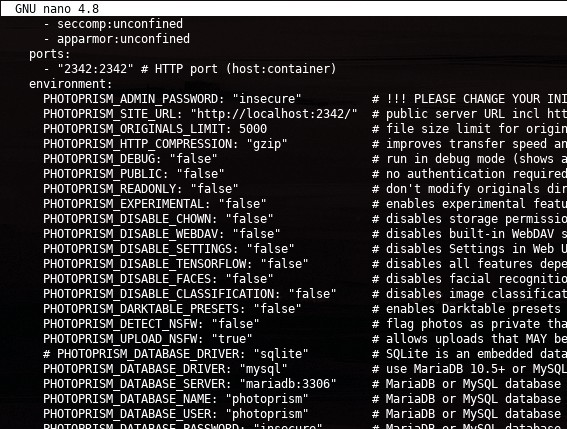PHOTOPRISM
Set up picture-perfect online photo storage
In a flurry of paranoia, David Rutland expels Google Photos from his life and sets up self-hosted photo storage on the semi-official Linux Format VPS.
OUR EXPERT
David Rutland takes pains to always look cool and mysterious in photographs and often wears a hat. He’s naturally photogenic and challenges you to find a bad picture of him anywhere.
Photography was a viable career path once upon a time. As a hobby, it was expensive, with steep outlays for even basic point-and-click compact cameras. A roll of decent quality 35mm film would set you back £4 in 1990 (equivalent to about a tenner in 2022 money), and you could add an extra £3.50 to get the film developed so you could actually see them in glorious 6x4 format. Professionals who chose to pour their creative juice into the field spent even more.
Then there were the years of training to learn about light levels, exposures and framing. And a high-end single lens reflex camera in the late 80s could easily cost as much as a two-bedroom terrace in Liverpool. But the extraordinary outlay would be made back with work in newspapers and magazines, at weddings, photoshoots, and fancy formal portrait sessions.
These days, the outlay is effectively zero. Almost everyone in the UK already has a phone with an inbuilt camera somewhere within three feet of them at all times (where are all the UFO photos?–ED). You don’t need to buy film or pay for developing, and the multilens monstrosities churned out by Apple, Samsung, and Huawei produce arguably better pictures than even the best professional equipment from previous decades.
Even storage is free. Instead of bursting the seams of a heavy oak steamer trunk in the attic, your photos are sorted, tagged and uploaded to the cloud – safe and accessible on Apple or Google servers.

The PhotoPrism docker-compose file enables you to change everything from site caption to NSFW filters.
QUICK TIP
If your photographic subjects don’t like the idea of their faces being scanned categorised and stored in your private database, you can disable TensorFlow functions or just facial recognition in the dockercompose.yml
Are your photos in safe hands?
However, trusting your photos to companies who watch everything you do and say, both online and in the real world, is unnerving – and perhaps a little naive. Can you be sure that no-one at Google HQ is ogling the lascivious images of your significant that you took last night over dinner, or checking out your beach-ready, speedo-clad dad-bod on Brighton beach. Of course you can’t. At the very least, it’s prudent to be worried about offending the Google automatic censors.
And your photos exist at the discretion of whoever holds them. You may think that Google will keep your precious snapshots safe forever, but it won’t. If you’re inactive for two years, Google will straight up delete your photos. If you go over the storage limits of your account, Google will delete some to make space. It’s not perfect. If only there was a way to back up, store and view your images without being vulnerable to the depredations of a data-slurping tech giant…